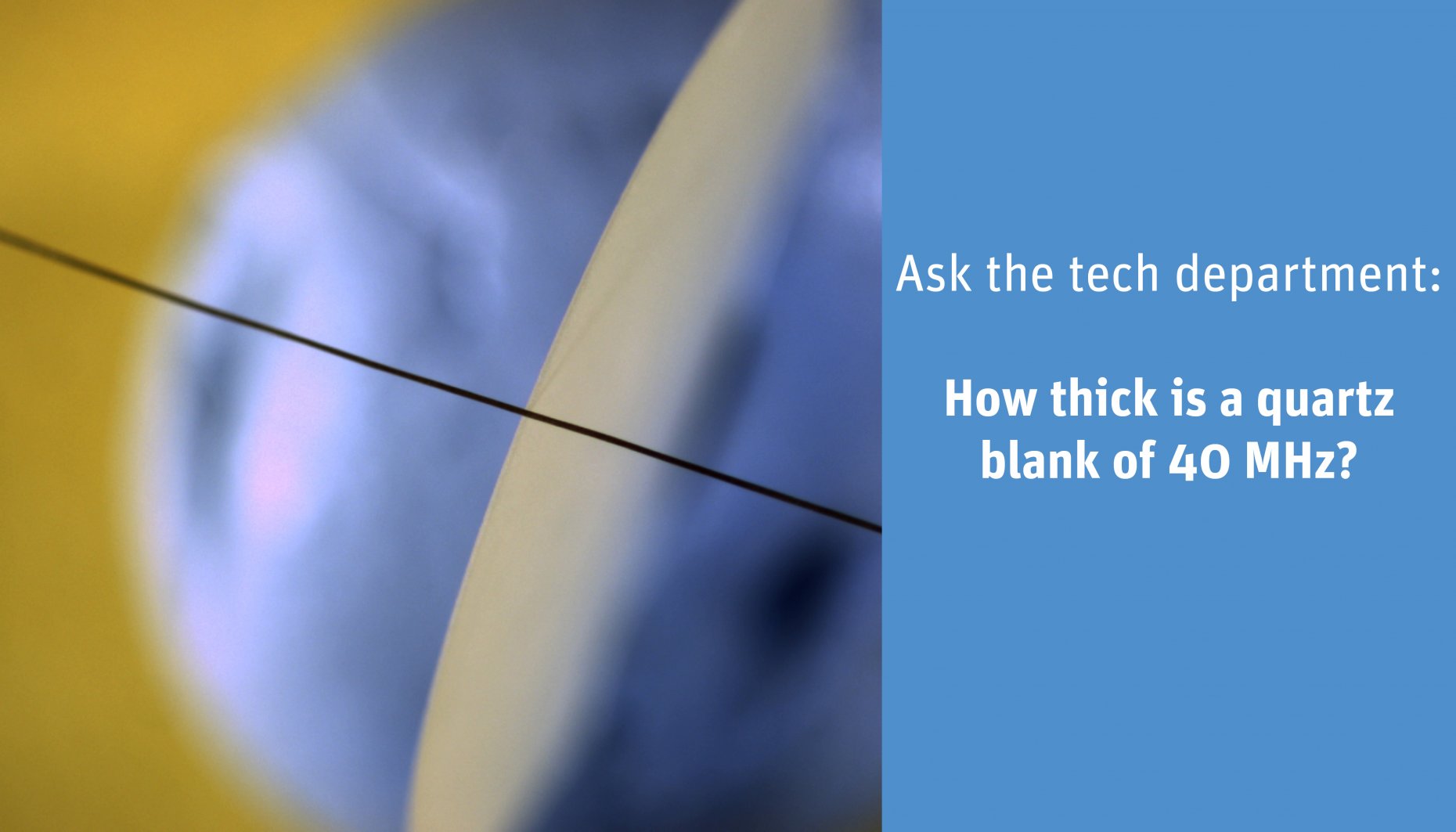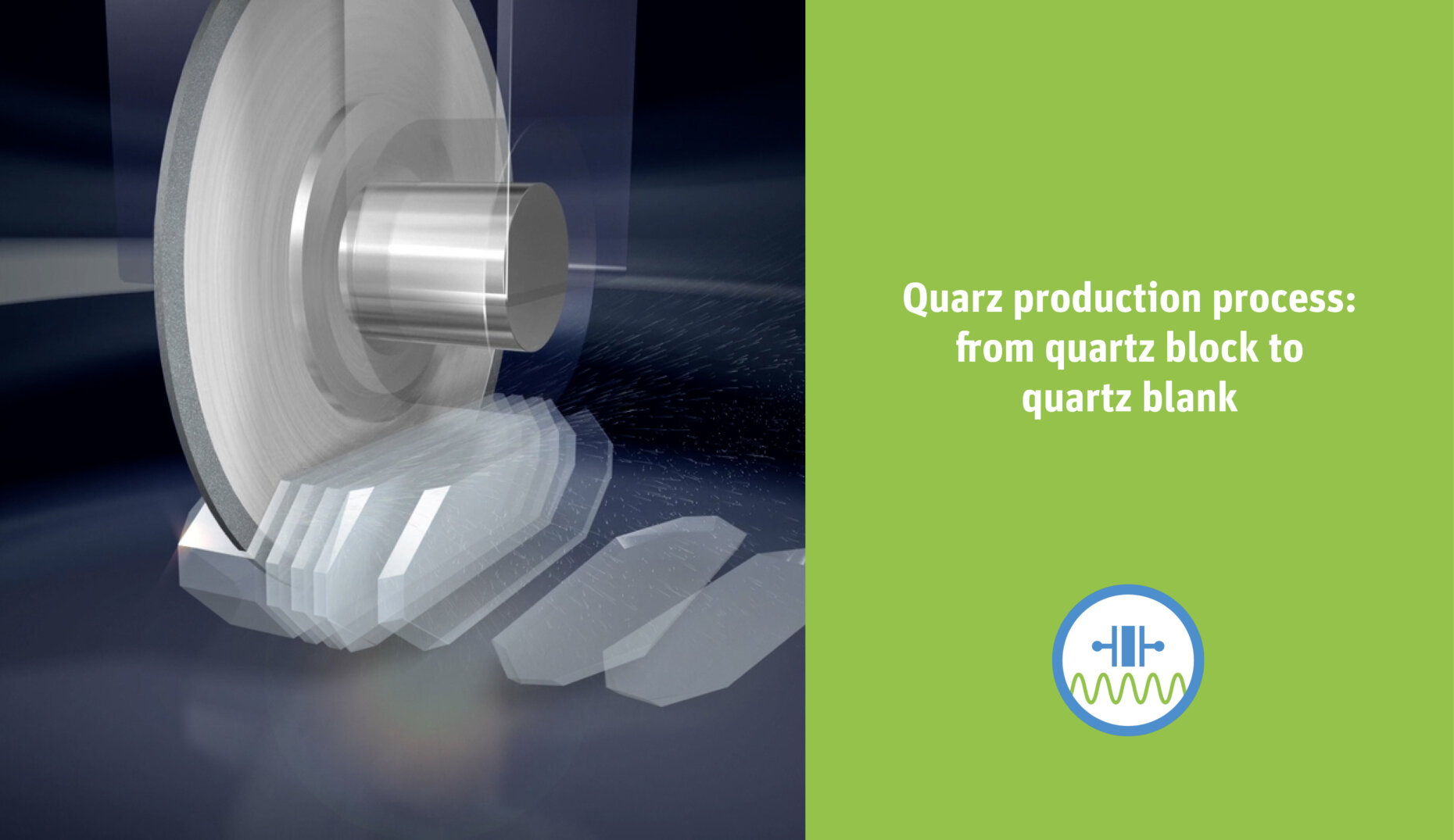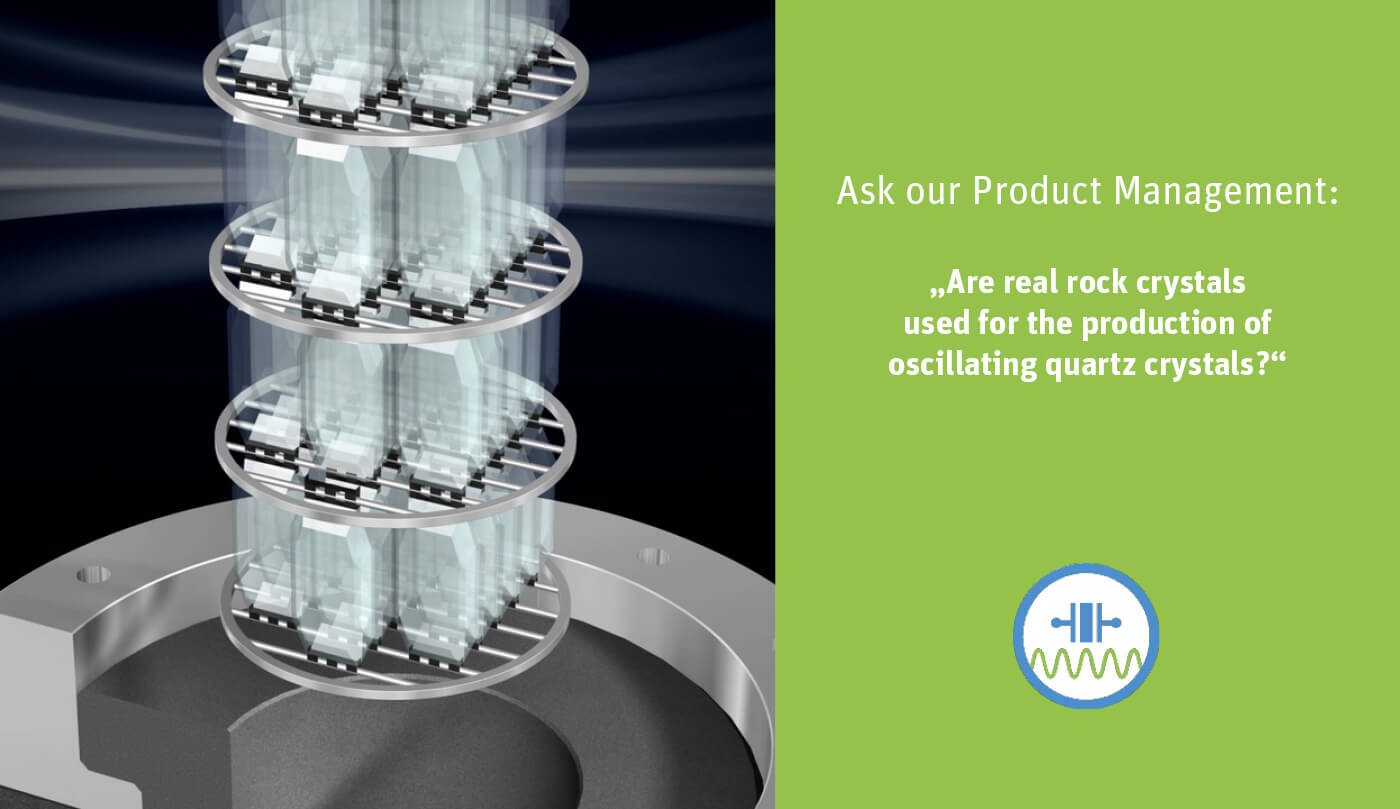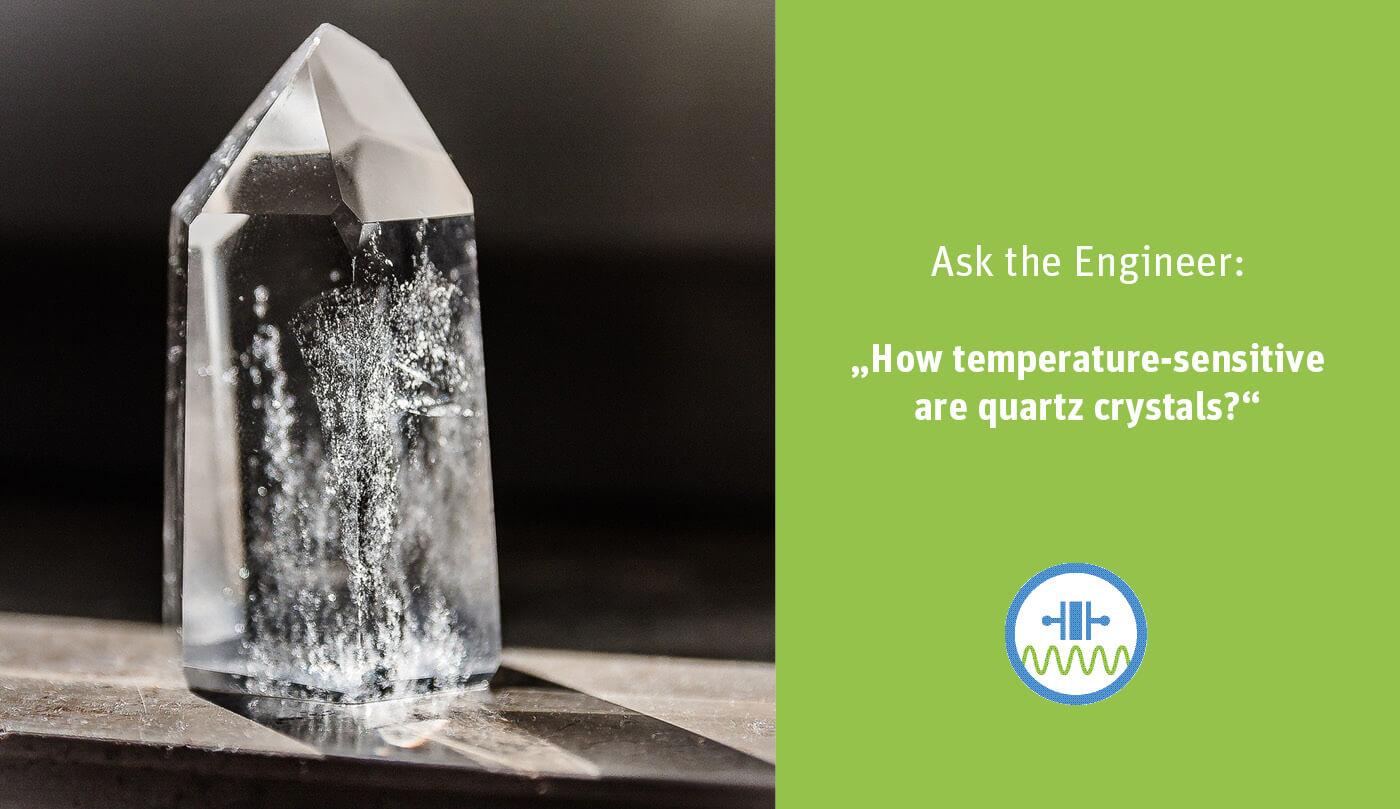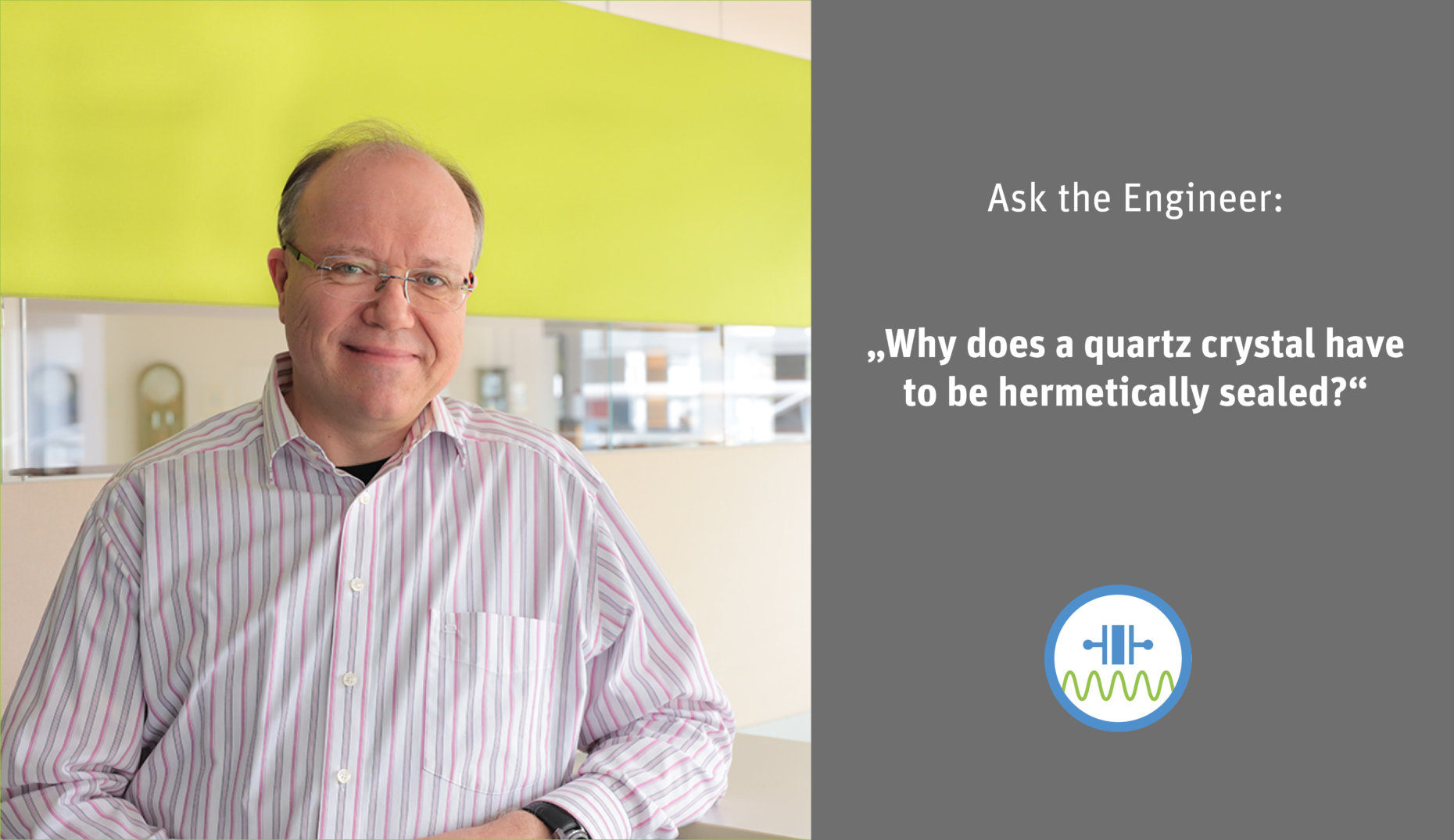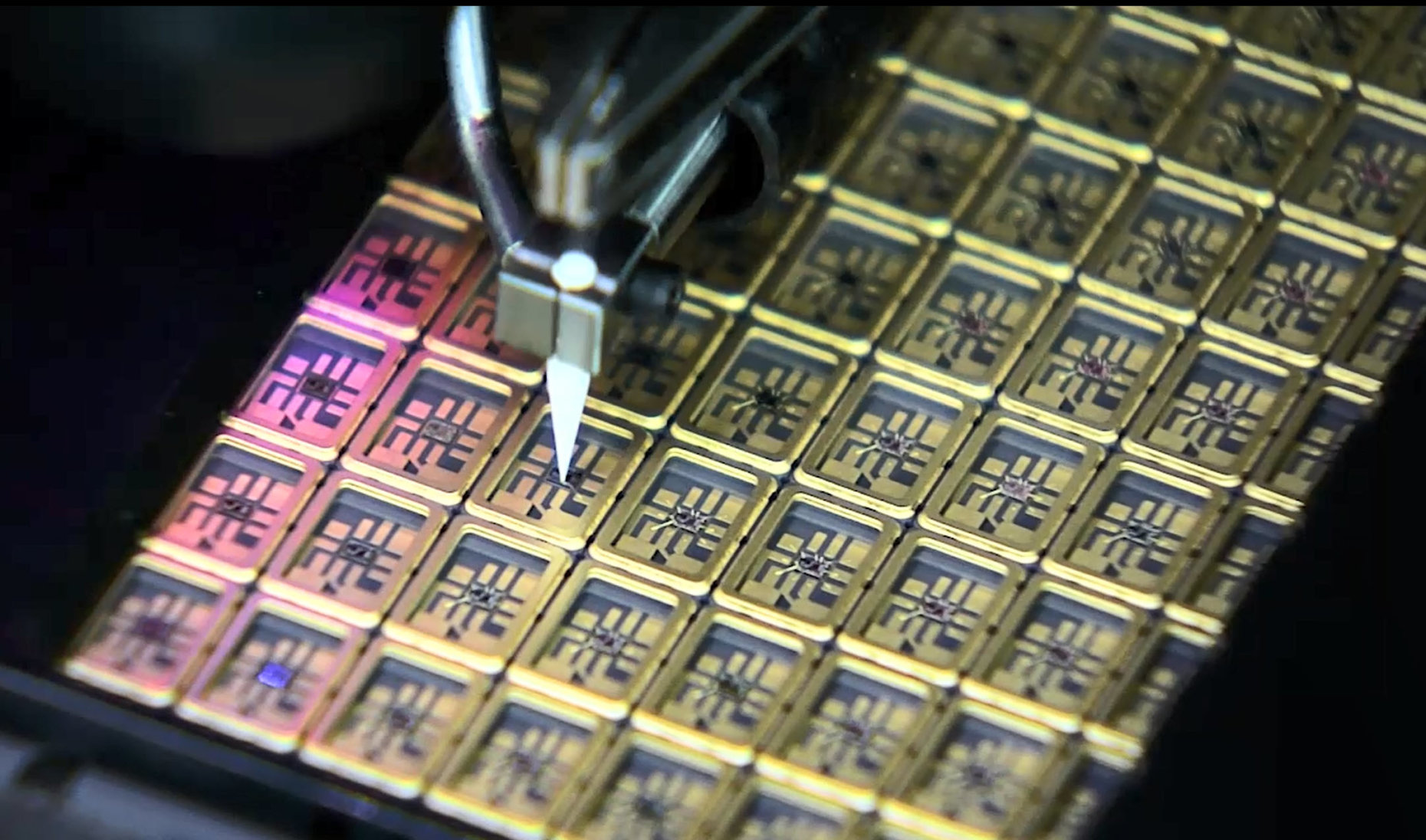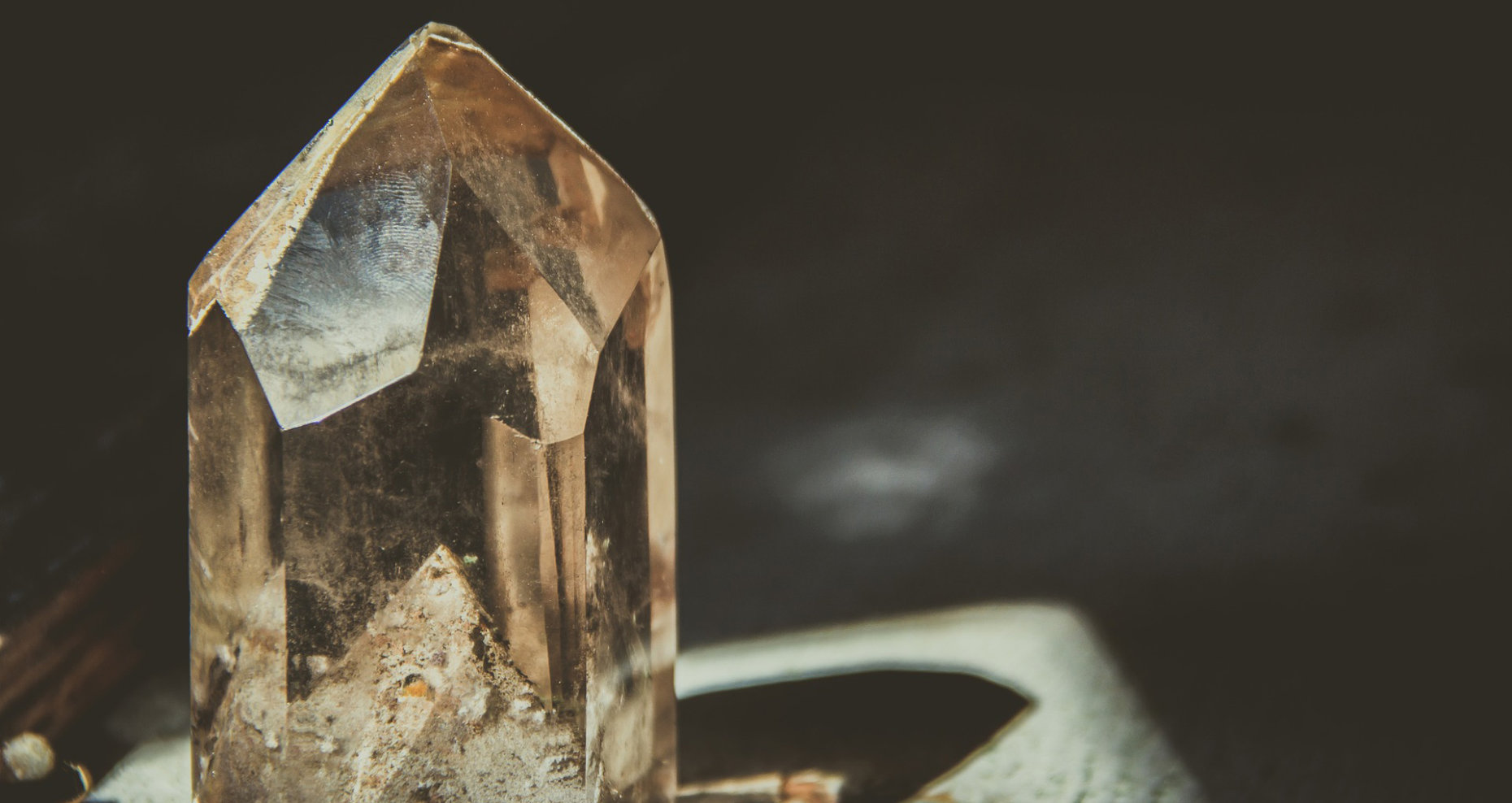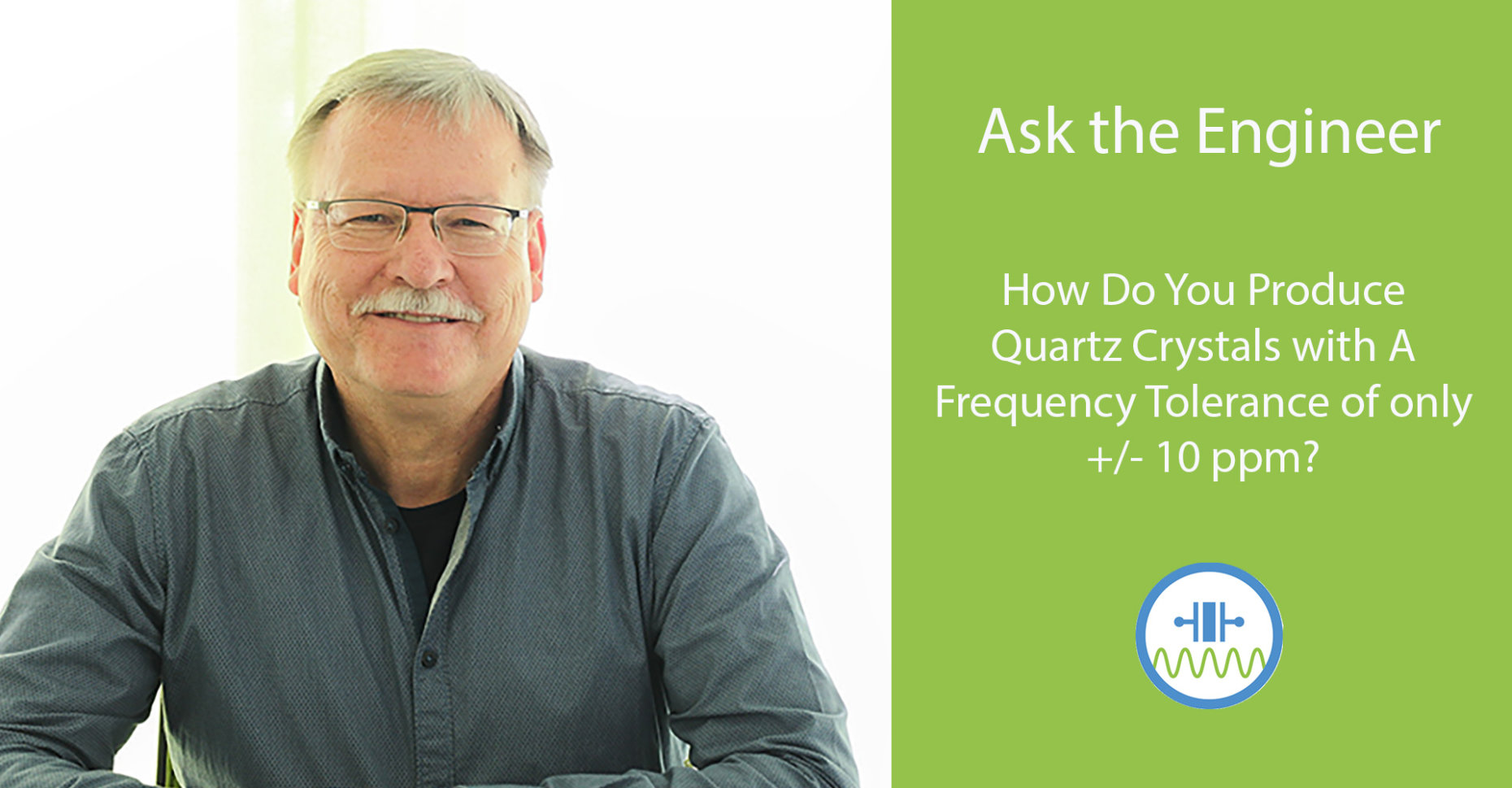Ask the tech department: How thick is a quartz blank of 40 MHz?
Let’s start this blog post with a little quiz: Guess for yourself – the solution will come in the text. How thick is a quartz blank of 40 MHz? As thick as.. Guess for yourself – the solution will come in the text. But first, let’s take a look at the theory: Generally speaking, there
- Published in Frequency Control Products, Frequency Control Products
Quartz production process: from quartz block to quartz blank
The previous blog post entitled: Ask the Product Manager: Are real rock crystals used for production of oscillating quartz crystals? covered the initial stages in the production of these small clocks. Quartz is artificially grown in autoclaves, reaching a weight of several kilos. From this point, however, we are still a few production stages away
- Published in Frequency Control Products
Ask the Product Management: Are real rock crystals used for production of oscillating quartz crystals?
SiO2 – this is the chemical name of the base material for oscillating quartz crystals. The formula shows that it is composed of only two elements: silicon and oxygen. We also find SiO2 in its crystalline form in the nature: as natural rock crystals. Here, the question arises: Are real rock crystals used for production
- Published in Frequency Control Products, Uncategorized
Ask the Engineer: how temperature-sensitive are quartz crystals?
Nowadays, Christmas without quartz crystals is unimaginable! Why? Even the modern time switches for outdoor lighting need a quartz to have an accurate time base. Also, a lot of our gifts are based on state-of-the-art electronics. Cell phones, smartwatches, PCs – they all need highly accurate frequency giving components to communicate with each other. Without
- Published in Frequency Control Products
Why does a quartz crystal have to be hermetically sealed?
What you always wanted to know about quartz crystals, but didn’t dare ask until now … – Why does a quartz crystal have to be hermetically sealed? At the end of the complex production of a quartz, or rather the small quartz disc, the quartz blank, it has to be mounted in a housing that
- Published in Frequency Control Products
How Does an Overtone Quartz Crystal Work?
A fast and smooth data transmission is critical in today’s world. Network and server systems are designed to process and forward information at lightning fast speeds. To achieve this, many of these applications depend on frequencies in the three-digit megahertz (MHz) range. Such high frequencies cannot be generated with an AT-crystal in the fundamental tone.
- Published in Frequency Control Products
It’s All about the Angle – The AT-Cut for Quartz Crystals
Whether medical technology, telecommunications or consumer electronics, quartz crystals have established themselves as a precise frequency generator in all industries. When energized, the thin quartz disc oscillates at a steady rate and thus determines the heartbeat of the application. While this sounds simple, the matter is quite complex because quartz blanks are not all the
- Published in Frequency Control Products
Ask The Engineer: How Are Quartz Crystals with A Frequency Tolerance of only +/- 10 ppm produced?
Basic tone crystals with high frequencies are in great demand, especially for wireless applications in the Internet of Things industry. More and more often we find devices communicating with each other and exchanging data via radio, for example via Bluetooth, ZigBee or ISM. All these radio standards use frequency bands in the three-digit megahertz or
- Published in Frequency Control Products


 Deutsch
Deutsch 